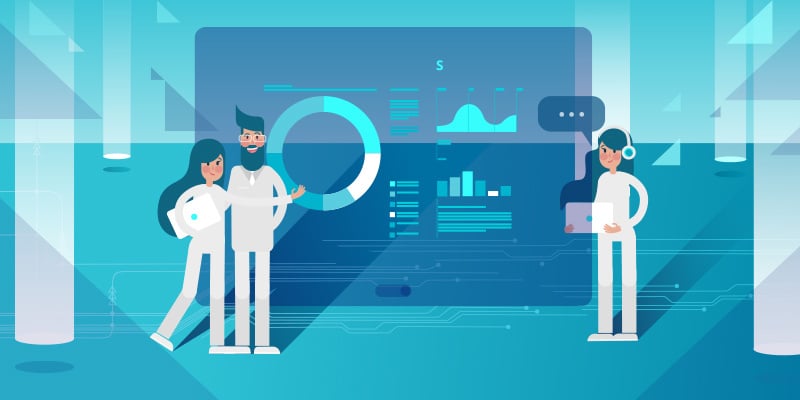
Digital transformation has been a hot topic at learning conferences this year as L&D is taking on a big role in preparing organizations for their digital future. Not only does your learning team need to undergo its own transition, it must help your organization adapt your culture to new ways of thinking and enable the re-skilling of your workforce.
Digital transformation isn’t a new concept. Adapting automation to human activities, and consequently adapting humans to automation, has been going on for decades.
The Upskilling Imperative
What’s new is that it is happening so fast. New applications of technology disrupt everything we do. Even if your organization does not have a digital transformation strategy, your people undergo that transformation in their personal lives. Use of smart devices in the home is exploding. Today’s workers are embracing technological change and expect their employers to do the same.
According to the Deloitte 2019 Human Capital Trends report, the challenge for L&D is to create “work centered learning programs, helping people consume information and upgrade their skills in the natural course of their day to day jobs.” If your organization doesn’t provide the resources for talented people to develop themselves, they will move on.
Organizations worldwide are catching on. The World Economic Forum reported in 2018 that 84% of organizations were increasing their investment in re-skilling programs. That report also predicted that by 2022 people will need an extra 101 days of learning. Deloitte reported that most organizations are more engaged in re-skilling than hiring the skills they need (Figure 1).

New Ways of Learning Demand New Skills
Digital learning is much more than digital content. It is providing a blend of learning that requires a broader range of skills.
Measuring learning in the same old way — registrations, attendance, completions, and training hours — will not be enough. L&D will need to evaluate learning behavior and analyze its impact on performance. This need demands skills in analytics and will require the ability to tell the story behind the numbers.
Measurement is becoming much more granular. Using Experience API (xAPI), we now can capture data on any kind of learning, including social learning and mentoring.
Providing personalized and adaptive learning requires a much deeper skill analysis than our legacy gap analysis techniques provide.
Most important of all, L&D will need to partner with operational management to analyze and report on the relationship between learning transfer and job performance.
Like other organizational functions, leaders and professionals in learning and development must now make better and faster decisions using the data their activities create. CEOs want to know the impact of learning on the organization and whether re-skilling efforts will meet their future needs.
To accomplish that, every L&D function must become adept at using their tools and resources to develop their data collection, analytics, and reporting capability.
Here are some things to think about if you are just getting started on your transformation journey.
Learn to Use the Tools You Have
Most learning platform vendors provide robust reporting and analytics tools, but many L&D leaders don’t the resources and expertise to take advantage of them. If you want to ramp up your capability, you may want to use a combination of these four options:
- Build your capability by upskilling your staff. It may take a long time.
- Buy the skills by hiring a data scientist, data analysts, and report designers. In today’s job market, that could be expensive.
- Borrow the skills from Marketing, your organization’s analytics team, or another part of your organization. That could work in the short-term, but you will have little control over availability.
- Rent the skills by engaging a consulting firm or contractor. You can engage skilled analytics practitioners by the hour. You have complete control, and the costs will decrease as your staff capability grows.
Get Connected
Partner with your company’s Chief Data Officer to institute data governance and management in L&D.
Don’t have a CDO? Get connected with your CIO and the Data Governance Institute to learn about the role and how to institute data governance in your organization. You may find that your CIO is the CDO, in fact, if not in name. Your CIO may also help you find resources in your organization.
What you learn will go a long way toward helping you support your company’s digital transformation.
Share Your Discoveries
Nothing builds trust like insightful, accurate reporting. When you discover new relationships, package them in well-designed data visualizations. Share them with the people in your organization who will benefit from your discovery. If they want to see the information on an ongoing basis, add it to their dashboards.
As your analytics skills grow, so will your ability to deliver the right learning to each learner at the right time.
Phenom eCloud is a comprehensive technology solutions provider committed to empowering businesses to overcome challenges, enhance their workforce capabilities, and achieve superior outcome



Leave a Comment